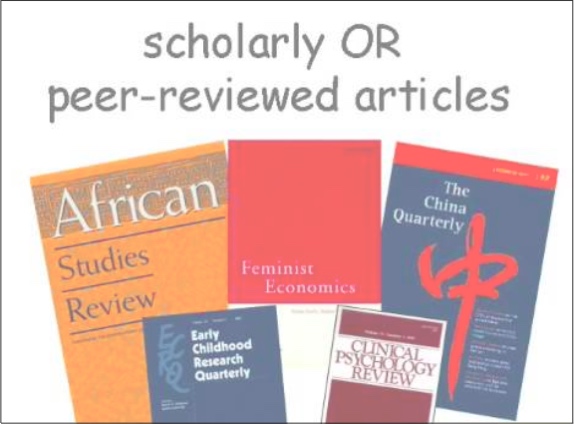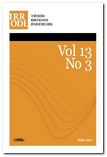From the special issues of Distance et Médiations des Savoirs -Sous la direction de Martine Vidal
This post is designed first to celebrate this multi-journal innovative and cost effective means to enhance Distance Education (DE) scholarship. Secondly, I provide a very brief overview and annotation of each of the 7 articles in the special issue.
Congratulations and thanks to Martine Vidal for pulling off her second international scholarly collaboration in the field of open and distance education (see her 2008 DMS earlier collaboration of the Right to Education. Martine’s idea in designing Seven sister journals – seven international contributions to distance learning, was to invite the editors of seven internationaly known, peer reviewed DE journals to select the most important article from their journal in the past 15 years. The editors were asked to select a significant contribution either to research, practice or both. The resulting special issue appeared (under Creative Commons license) this month online.
Of course, I intended to immediately write this post as a tribute and a review when I saw the issue online. But alas time got in the way, and I may have negleted the task, as I didn’t really read the complete artciles until a free paper copy of the journal arrived in my mailbox. What does that say about paper vs. electronic journals?
Likely there are readers (including you?) who think this issue might be of interest, but will you really get around to reading these journal articles??
Hopefully, you can scan through this review and follow a link to the paper that you think sounds most interesting to your teaching, learning or researching – or all three.
I should note that Distance et Médiations des Savoirs is usually a French language journal, so additional thanks to the DMS staff and editors for producing this bilingual journal.
In order as they appear in the special issue:
1. IRRODL Intro by Terry Anderson
Alfred P. Rovai Building Sense of Community at a Distance The International Review of Research in Open and Distributed Learning, [S.l.], v. 3, n. 1, apr. 2002
Like the other editors, we had to consider what constituted the “best article” over 15 years of IRRODL production. First, I went to Open Journal System stats to check out the download numbers. This provides a pretty good estimate of “crowd sourcing”. However, it is biased towards older articles that have had longer time period to gain downloads. Next, I checked some of the top cited articles on Google Scholar and finally, of course, we used our bundle of personal prejudices and preferences to pick a winner.
We choose Rovia’s 2002 article because it dug into the conceptual basis for the growing interest in distance education, not as independent study, but as an example of community operating at a distance. Rovai’s article led to a companion piece in which he introduced his 20-item Classroom Community Scale that provides empirical measurement of the community experienced by DE learners. In the introduction I couldn’t help but compare it to the Community of Inquiry model (developed just a few years earlier by Randy Garrison, Walter Archer and myself) and speculated on the greater use and citations of the COI model.
The Rovai article does an excellent job of a overviewing the conceptual base for 7 dimensions of community- from trust, spirit common expectations to interaction. It goes on to isolate factors of interaction including transactional distance, social presence, social equity and actives associated with the learning design.
2. Asian Association of Distance Education Ramesh C. Sharma
Fred Lockwood A Ladder of Publication: Scaffolding for emergent authors. Asian J D E 2003 vol 1, no 1, pp 5-11. Asian Journal of Distance Education 2007 vol 5, no 3, pp 10 – 27
Ramesh C. Sharma et Mohana Kumar Rajesh Tutor-Marked Assignments: Evaluation of Monitoring in India [Texte intégral]
Editor Ramesh Sharma choose two articles from the Asian Journal of DE. The first by Fred Lockwood provides a ladder model (moving up from seminars and workshops through chapter and articles to books), to describe the steps necessary to successfully publish and distribute scholarly research article. It is striking to note the absence of discussion of open access publishing and its advantages, but then the article was written in 2003, long before open publishing culture and even Creative Commons was established.
A bit strangely, Sharma choose one of his own articles for the second entry. This article examined the results from tutor marking and assessments of hypothetical DE students at Indira Gandhi Open University. This empirical study looked at the nature and quality of the comments left by tutors after they had engaged in a professional development “orientation”. It is perhaps unfortunate that the study didn’t look at real assessments and feedback, rather than those produced to provide feedback on an anonymous assignment after the workshop – thus detracting from the face validity of the research.
3. EuropeanJournal of Open, Distance and E-Learning (EURODL)
Ulf-D. Ehlers Quality in e-Learning from a Learner’s Perspective. European Journal of Open, Distance and E-Learning, May 2004
Editor Uli Bernath choose a great article that overviews the complex issue of quality in learning. Quality remains a focus, even though so ill and variously defined by all the educational stakeholders – including students. Thus, an article that focuses on learners’ perspective is especially useful. In an era of increasing opportunity and individual responsibility for life-long learning, understanding what learners perceive as the most important features of e-learning experience is invaluable. The article covers both qualitative and quantitative data to produce 30 dimensions of quality. Generally my head begins to spin when talking about more than three dimensions – so thirty is a bit challenging. Fortunately, Ehlerscondenses these to 7 themes. He then presents data using cluster analysis to try to understand the different criteria for assessing quality by different crowds (aggregates of interests in a DE course).
4. DMS Distances et médiations des savoirs (DMS)
Jacques Béziat Formateur en ligne : vers un modèle d’action Distances et médiations des savoirs, n°1, Décembre 2012. Trainer Online: Towards an Action Model
Monique Grandbastien, Pierre Moeglin et Daniel Peraya The host editors of DMS provide a nice description of how and why they chose this article.
This article discusses the role of the “trainer” – in this case I think it is like the tutor in a large-scale DE environment. Unfortunately, my unilingual handicap meant it was much easier reading this French article through Google Translate (great improvement on translating the full article since last I checked!!!). This model presented and validated, to some extent, (with very small N survey data) the teachers’ role in a paced DE program with synchronous and asynchronous sessions. The model gives a picture of the various types of actions encountered and required by trainers in this context.
5. Open Praxis
Inés Gil Jaurena, editor of Open Praxis introduces (for a number of well explained reasons) her selection of:
Sandra Peter et Markus Deimann On the role of openness in education: A historical reconstruction Open Praxis, vol. 5 issue 1, January–March 2013, pp. 7–14
Given the very long association with DE and openness – a linkage, that continues to grow to this day, is useful to examine the historical perspective – especially to us old guys! In their romp from late medieval to modern times, the authors note the evolving meaning and the various dimensions of openness. They also “highlight the danger of emphasizing one aspect of openness while backgrounding others and how unrestricted practices can quickly and repeatedly become institutionalized”(p. 6) The article is now over 5 years old but I think there many discussions and technological innovations yet to come to contribute to our openness knowledge and practice in DE.
6. International Journal of E-Learning & Distance Education
Irwin DeVries provides a nice little essay that I couldn’t help but love, as it has“my name all over it” literally. In this selection we see a second reference to the valued perspective of the student, as opposed to the teacher, employer, government or institutional perspective
IJDE chose Penny Rush Isolation and Connection: The Experience of Distance Education International Journal of E-Learning & Distance Education, La revue internationale de l’apprentissage en ligne et de l’enseignement à, Vol 30, n° 2 (2015).
This work analyzes a survey administered in 2014 to 1002 students enrolled in DEprograms at the University of Tasmania. The analysis of the open-endedquestions reveals what students both like and dislike about DE. As expectedcommon themes for advantages centre on flexibility, self determination,location independence and necessity (the only choice, given life circumstance).Also unsurprisingly, disadvantages include lack of support from theinstitution, isolation and challenges of self-reliance and balancing busy lies.Major suggestions for improvement include more resources, more contact and more communications.
7. Open Education Research
Zhihui Wei introduces Ye Zhonghai, Zhang Yong et Ma Lihua. A Historical Overview of China’s Learning City Construction: Since the 1990’s.Open Education Research, vol. 1, No. 1, 2015
I confess to be quite out of words to describe this article from the Chinese Journal Open Education Research. The article is supposedly about how Smart Cities were designed, planned and implemented in China. However, even after reading the translated version (twice!), I have no idea how a “smart city” is defined, how exactly they function, how they are evaluated etc. etc. I did get LOTS of preaching, politically correct best practices and directions –supposedly for creation of best smart cities, but nothing that really struck me as scholarly rationale nor much of any evidence. Typically, the talk on security measures notes the smart learning organization “is associated with planning, guiding, evaluating, coordinating, supervising, and securing” But again, I have no idea what Smart Cities in China actually organize.
I looked through the titles of Open Educational Research in their archives of 24 years, and I see a lot of interesting titles- related to DE. I also could not locate this particular article as the reference in the special issue (and Google scholar) is incorrect- it isn’t in Vol 1 2015, or even volume Vol 19 1 2015. So I may be losing a lot in translation, but this is by far the weakest article in this special edition.
Conclusion
I think anyone with a strong interest in improving either practice or theory of DE will learn from and enjoy this special issue. It is nice to see global perspectives and to note the commonality of interests that we share. I also really liked the mix of empirical results, “think pieces” and historical pieces. This is especially fortunate to get this mix as no one knew before hand what articles would be submitted. Please see links below for more detailed summaries of the seven articles. – or better yet – read the articles yourself!
For more detailed reviews please see the final articles in the special issue by Emmanuelle Voulgre and Clément Dussarps




